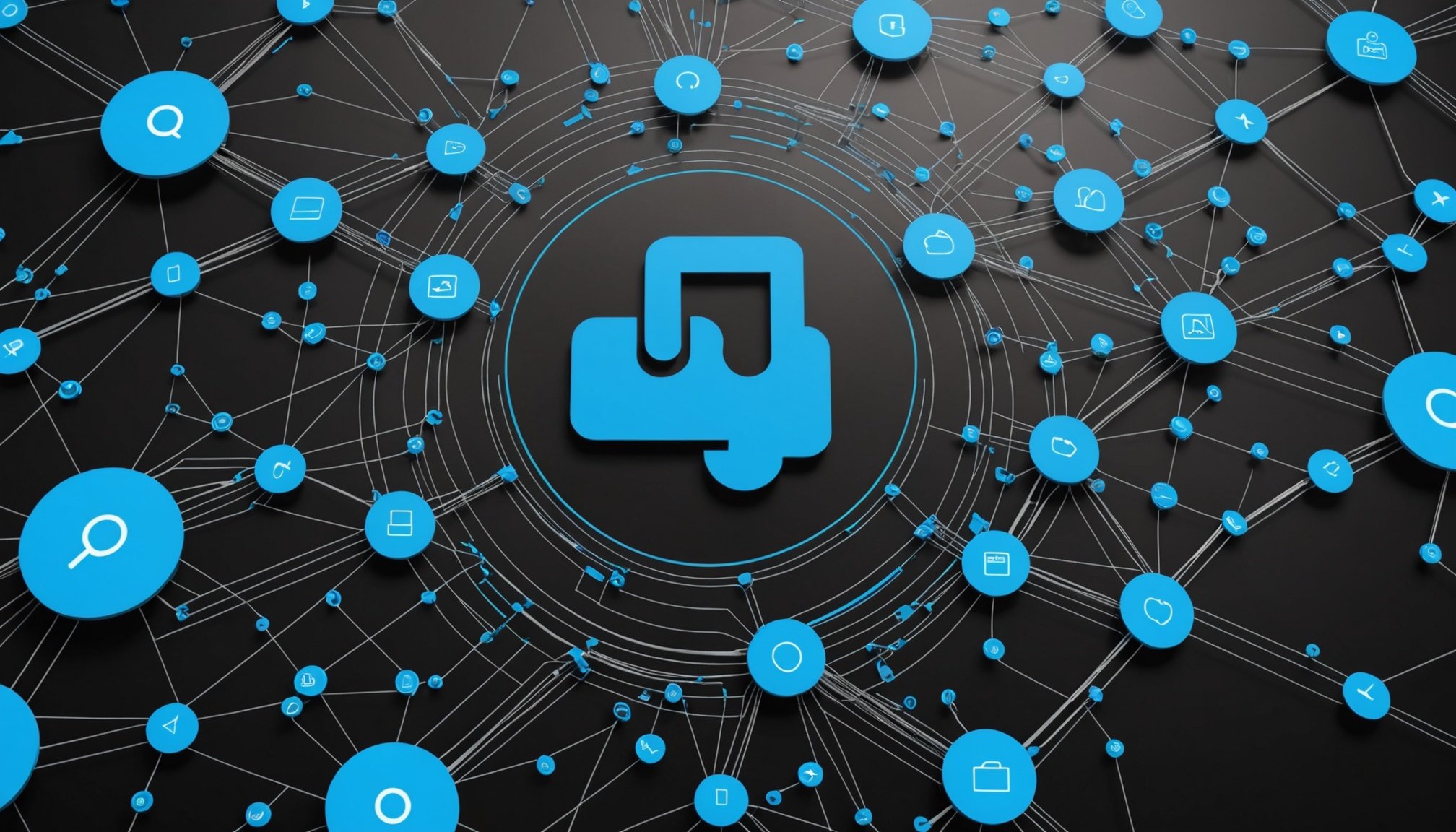Unlocking Workflow Automation: Top Strategies for Maximizing Microsoft Azure Logic Apps
In the modern business landscape, automation is no longer a luxury but a necessity. Microsoft Azure Logic Apps stands at the forefront of this automation revolution, offering powerful tools to streamline and optimize business processes. Here’s a comprehensive guide on how to maximize the potential of Azure Logic Apps and transform your workflow automation.
Understanding Azure Logic Apps
Before diving into the strategies, it’s essential to understand what Azure Logic Apps is and what it can do.
Have you seen this : Unlocking Security: Proven Strategies for Effective Secret Management with HashiCorp Vault
Azure Logic Apps is a cloud-based platform designed to automate and orchestrate workflows across various services, systems, and applications. It allows businesses to create, deploy, and manage automated workflows with ease, using a user-friendly interface and pre-built templates[3].
Key Components of Logic Apps
- Workflows: These are the core elements of Logic Apps, defining a series of steps that automate tasks and integrate systems.
- Triggers: Every workflow begins with a trigger, which could be an incoming email, a change in a database, or a timer-based event.
- Actions: Once triggered, a series of actions are executed, such as sending an email, updating a database, or calling an API[3].
Choosing the Right Hosting Plan
When setting up Azure Logic Apps, one of the critical decisions is choosing the right hosting plan. Here’s a comparison between the two main plans: Consumption and Standard.
This might interest you : Top Strategies for Safeguarding Your Apache Kafka Cluster: Best Security Practices You Need to Know
Consumption vs Standard Logic Apps
| Feature | Consumption Logic Apps | Standard Logic Apps |
|---|---|---|
| Host Environment | Multi-tenant | Single-tenant |
| Workflow Structure | 1-to-1 mapping between logic app and workflow | 1-to-many mapping; multiple workflows in one logic app |
| Performance | Pay-as-you-go model | Better performance due to shared resources and proximity |
| Control and Customization | Limited control over runtime and performance | More control and fine-tuning capabilities |
| Connectors and Operations | Managed connectors | Built-in operations for better performance and lower costs |
| Security and Integration | Basic security features | Integrated support for virtual networks and private endpoints |
The Standard plan, powered by the Azure Functions runtime, offers more control, better performance, and seamless integration with other Azure services[4].
Designing Efficient Workflows
Designing efficient workflows is crucial for maximizing the benefits of Azure Logic Apps.
Best Practices for Workflow Design
- Start with a Clear Trigger: Every workflow begins with a trigger. Choose triggers that are specific and relevant to your business needs. For example, a trigger could be an incoming web request or a change in a database[5].
- Use Pre-Built Templates: Azure Logic Apps provides numerous pre-built templates that can help you get started quickly. These templates cover a wide range of scenarios, from order processing to document approval workflows[3].
- Integrate with Other Services: One of the strengths of Azure Logic Apps is its ability to integrate with various Azure services and third-party systems. Use built-in connectors for services like Azure Service Bus, Azure Event Hubs, and SQL Server to enhance your workflows[4].
Example Workflow: Order Processing
Here’s an example of how you can automate order processing using Azure Logic Apps:
- Trigger: An order is placed through a retail application or website.
- Actions:
- Validate the order details.
- Check inventory levels.
- Send the order for fulfillment.
- Notify the customer via email or SMS.
- Integration: Use Azure API Management for API calls, Azure Kubernetes Service (AKS) for microservices, Azure Cosmos DB for data storage, and Power BI for analytics[3].
Leveraging Advanced Features
Azure Logic Apps comes with several advanced features that can significantly enhance your workflow automation.
Built-in Operations and Managed Connectors
The Standard plan introduces built-in operations that run locally within the same process as your workflows. This design provides better performance and lower costs compared to managed connectors, which run as separate resources[4].
Error Handling and Monitoring
Effective error handling and monitoring are critical for ensuring the reliability of your automated workflows.
- Error Handling: Implement robust error handling mechanisms within your workflows. This can include retry policies, error actions, and notifications to ensure that any issues are promptly addressed.
- Monitoring: Use Azure Monitor, Log Analytics, and App Insights to track the execution, success, and failure of your workflows in real-time. This provides comprehensive visibility and helps in troubleshooting and optimization[3].
Integrating with Other Azure Services
Azure Logic Apps is part of a broader ecosystem of Azure services, and integrating with these services can amplify its capabilities.
Integration with Azure Automation
Azure Automation and Azure Logic Apps can work together seamlessly to manage and automate infrastructure and application lifecycles.
- Hybrid Automation: Use Hybrid Runbook Workers to manage on-premises servers and services like SQL Server, Active Directory, and SharePoint Server.
- Alert Response: Orchestrate responses to alerts generated by Azure Monitor or other monitoring systems using Azure Automation runbooks[1].
Integration with Azure DevOps
Integrating Azure Logic Apps with Azure DevOps enhances your continuous integration and continuous deployment (CI/CD) pipelines.
- Deployment Pipelines: Use Azure DevOps to deploy and manage your Logic Apps workflows. This includes copying artifacts to the host environment and starting your apps to run your workflows[2].
Ensuring Security and Compliance
Security and compliance are paramount when automating business processes.
Enterprise-Grade Security
Azure Logic Apps offers enterprise-grade security features, including:
- Azure Virtual Network Connectivity: Integrate your Logic Apps with virtual networks for secure communication.
- Managed Identities: Use managed identities to authenticate your Logic Apps without storing credentials.
- Compliance Standards: Ensure compliance with various global, industry-specific, and regional standards[3].
Real-Life Examples and Success Stories
Seeing how other businesses have successfully implemented Azure Logic Apps can be incredibly inspiring and informative.
BMW’s Automation Journey
BMW has leveraged Azure services, including Azure Logic Apps, to improve customer experiences and operational efficiency. By automating workflows and integrating with services like API Management, AKS, Cosmos DB, and Power BI, BMW has enhanced its product quality and engineer productivity[3].
Practical Insights and Actionable Advice
Here are some practical tips to help you get the most out of Azure Logic Apps:
Start Small and Scale
- Begin with simple workflows and gradually scale up as you become more comfortable with the platform.
- Use pre-built templates to get started quickly.
Monitor and Optimize
- Regularly monitor your workflows using Azure Monitor and Log Analytics.
- Optimize your workflows based on performance data and user feedback.
Integrate with Other Tools
- Leverage the integration capabilities of Azure Logic Apps to connect with other Azure services and third-party systems.
- Use built-in operations and managed connectors to enhance performance and reduce costs.
Azure Logic Apps is a powerful tool for automating and optimizing business processes. By understanding the key components, choosing the right hosting plan, designing efficient workflows, leveraging advanced features, and ensuring security and compliance, businesses can unlock the full potential of this platform.
As you embark on your journey with Azure Logic Apps, remember to start small, monitor and optimize regularly, and integrate with other tools to create seamless and efficient automated workflows.
Detailed Bullet Point List: Key Features of Azure Logic Apps
- Workflows:
- Define a series of steps to automate tasks and integrate systems.
- Can be stateful or stateless.
- Multiple workflows can be hosted in a single logic app resource.
- Triggers:
- Specify the event that initiates the workflow.
- Examples include incoming emails, database changes, or timer-based events.
- Actions:
- Define specific tasks or steps within a workflow.
- Examples include sending emails, updating databases, or calling APIs.
- Built-in Operations:
- Run locally within the same process as your workflows.
- Provide better performance and lower costs.
- Examples include Azure Service Bus, Azure Event Hubs, and SQL Server.
- Managed Connectors:
- Run as separate resources.
- Managed by the shared connectors ecosystem in Azure.
- Examples include API connections for various services.
- Error Handling:
- Implement retry policies and error actions.
- Notify teams of errors for prompt resolution.
- Monitoring:
- Use Azure Monitor, Log Analytics, and App Insights.
- Track execution, success, and failure of workflows in real-time.
- Security and Compliance:
- Enterprise-grade security features.
- Azure Virtual Network connectivity.
- Managed identities.
- Compliance with various global and industry-specific standards.
Comprehensive Table: Comparison of Consumption and Standard Logic Apps
| Feature | Consumption Logic Apps | Standard Logic Apps |
|---|---|---|
| Host Environment | Multi-tenant | Single-tenant |
| Workflow Structure | 1-to-1 mapping between logic app and workflow | 1-to-many mapping; multiple workflows in one logic app |
| Performance | Pay-as-you-go model | Better performance due to shared resources and proximity |
| Control and Customization | Limited control over runtime and performance | More control and fine-tuning capabilities |
| Connectors and Operations | Managed connectors | Built-in operations for better performance and lower costs |
| Security and Integration | Basic security features | Integrated support for virtual networks and private endpoints |
| Billing Model | Consumption-based | Workflow Service Plan or App Service Environment plan |
Relevant Quotes
- “Azure Logic Apps can help businesses reduce the time it takes to develop and deploy applications. The service’s user-friendly interface and pre-built templates make the development of workflows a quicker, more streamlined process.”[3]
- “The Standard plan introduces built-in operations that run locally within the same process as your workflows. This design provides better performance and lower costs compared to managed connectors, which run as separate resources.”[4]
- “By automating workflows and integrating with services like API Management, AKS, Cosmos DB, and Power BI, BMW has enhanced its product quality and engineer productivity.”[3]











